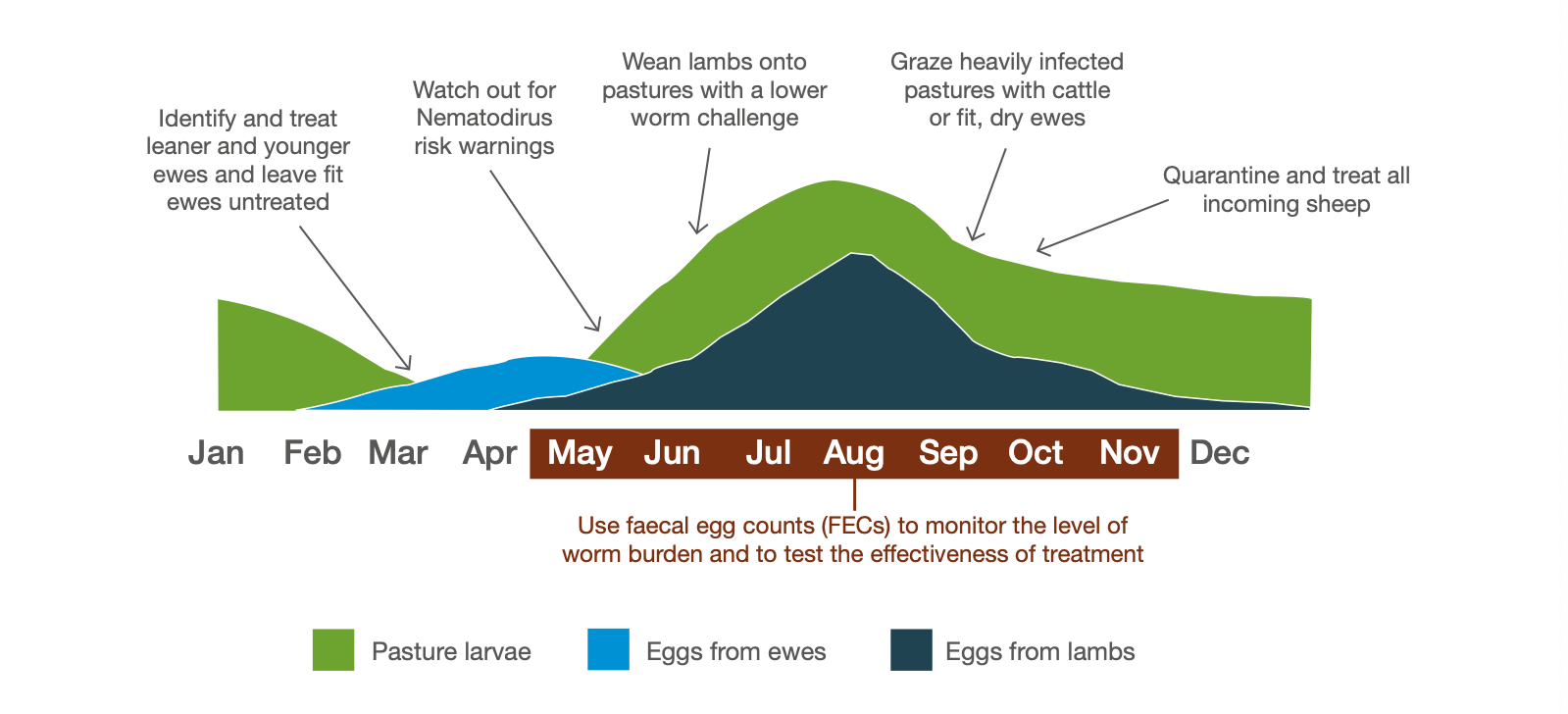Worms 🪱
Worm infestations are a significant concern for sheep farmers, affecting the health and productivity of their flocks. These parasites can cause severe health issues, especially in younger sheep, leading to reduced meat and wool production. Let's dive into the details of worm infestations, their symptoms, treatment, and prevention.
Symptoms and diagnosis of worms 🩺
Common Worms in Sheep
- Haemonchus contortus (Barber's Pole Worm): Causes severe anemia, lethargy, and sometimes death. Diarrhea is not a feature of this infection.
- Teladorsagia spp. and Trichostrongylus spp.: Cause diarrhea, weight loss, and poor wool quality.
- Nematodirus battus: Affects young lambs, causing severe diarrhea and dehydration.
Symptoms
- Anemia (pale mucous membranes)
- Weight loss and poor body condition
- Diarrhea (in some worm types)
- Swelling under the jaw (bottle jaw)
- Lethargy and weakness
Diagnosis
Diagnosis is typically done through faecal egg counts (FEC), which help determine the presence and severity of worm infestations. It's important to collect fresh dung samples and have them analyzed within 48 hours for accurate results.
How to treat worms in sheep 💊
Anthelmintics
Anthelmintics are drugs used to treat worm infestations. There are several groups of anthelmintics, each effective against different types of worms:
- Group 1-BZ (White): Albendazole, Fenbendazole
- Group 2-LV (Yellow): Levamisole
- Group 3-ML (Clear): Ivermectin, Moxidectin
- Group 4-AD (Orange): Monepantel
- Group 5-SI (Purple): Derquantel and Abamectin
It's crucial to use the right product for the type of worm, administer it correctly, and follow the recommended dose rates to avoid resistance.
How to prevent worms in sheep 🛡️
Good Grazing Management
Effective worm control involves good grazing management to minimize the exposure of sheep to infective larvae. Strategies include:
- Rotating pastures to avoid overgrazing and contamination
- Using low-risk pastures for young lambs
- Quarantining new sheep to prevent introducing resistant worms
Regular Monitoring
Regular faecal egg counts (FEC) help monitor worm burdens and determine the need for treatment. This can reduce the use of anthelmintics and slow down the development of resistance.
Targeted Selective Treatment
Treating only the sheep that need it, based on FEC results and body condition, helps maintain a population of susceptible worms, reducing the risk of resistance.
Vaccination and Genetic Selection
Research into vaccines and genetic selection for natural immunity is ongoing. While no effective vaccines are currently available, selecting sheep with natural resistance to worms can be part of a long-term strategy.
Conclusion
Managing worm infestations in sheep requires a combination of good grazing practices, regular monitoring, and strategic use of anthelmintics. By following these guidelines, farmers can protect their flocks from the harmful effects of worms and ensure healthy, productive sheep.


